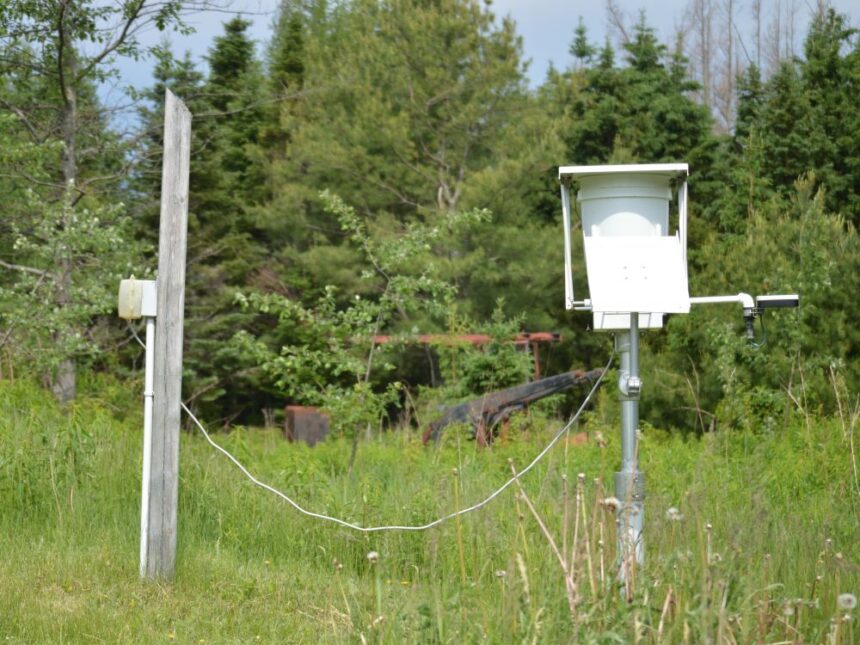Article contentChemistryArticle contentVanlderstine said acid rain could also include forms of snow, fog, hail, or even acidic dust.Article content“Acidity and alkalinity are measured using a potential of hydrogen scale for which 7.0 is neutral. The lower a substance’s pH (less than 7), the more acidic it is. The higher a substance’s pH (greater than 7), the more alkaline it is,” she said.Article contentNormal rain consists of a pH of 5.6 due to the dissolving of carbon dioxide, forming weak carbonic acid, Vanlderstine said.Article contentShe added that acid rain usually has a pH ranging between 4.2 and 4.4.Article contentTesting precipitationArticle contentIn P.E.I., precipitation samples are collected at the Southampton air monitoring station at the eastern P.E.I. forestry office.Article contentThe monitoring station is equipped with a collection system that gathers and stores precipitation for measurement, Vanlderstine said.Article content At the Southampton Forestry office in Cardigan, P.E.I., a precipitation collector is placed to monitor the potential of hydrogen to determine its quality. An air quality monitoring is also conducted to determine what pollutants could be allocated from its water samples. Photo by Yutaro SasakiArticle contentA bucket is used to collect rainfall and other forms of precipitation, allowing for an accurate assessment of the accumulated volume, she added.Article contentArticle content“Each week, the collected precipitation is transferred to sample bottles and sent to the P.E.I. analytical lab for chemical analysis,” Vanlderstine said.Article contentThe station also features an automated sensor that detects precipitation events.Article content“When precipitation begins, the sensor triggers the opening of a protective lid, allowing rainfall and other precipitation to enter the collection bucket. Once precipitation stops, the lid automatically closes to prevent contamination,” Vanlderstine said.Article contentMild acidityArticle contentThe average pH in 2024 was 6.1, Vanlderstine said.Article contentAt this level, the acidity is mild and unlikely to cause significant harm to the environment, she added.Article content“Once a week, precipitation samples are collected and tested for pH along with several other parameters,” she said.Article contentSince 1982, samples have been collected to store and monitor the atmosphere above P.E.I.Article contentArticle content“The annual average pH value has increased from 4.8 in 2004 to 6.1 in 2022. The average pH for the last five years is 6.2,” she said.Article contentCurrent causesArticle contentAcid rain results when sulphur dioxide (SO2) and nitrogen oxides (NOX) are emitted into the atmosphere and transported by wind and air currents, Vanlderstine said.Article content“The sulphur dioxide and nitrogen dioxide react with water, oxygen, and other chemicals to form sulfuric and nitric acids. These then mix with water and other materials before falling to the ground,” she said.Article contentThe major sources of SO2 and NOX in the atmosphere are the burning of fossil fuels to generate electricity, vehicles and heavy equipment emissions, manufacturing, oil refineries and other industries.Article contentArticle contentYutaro Sasaki is a Local Journalism Initiative reporter, a position funded by the federal government. He can be reached at ysasaki@postmedia.com and followed on X @PEyutarosasaki.Article content
P.E.I. precipitation no longer in the range considered acid rain











